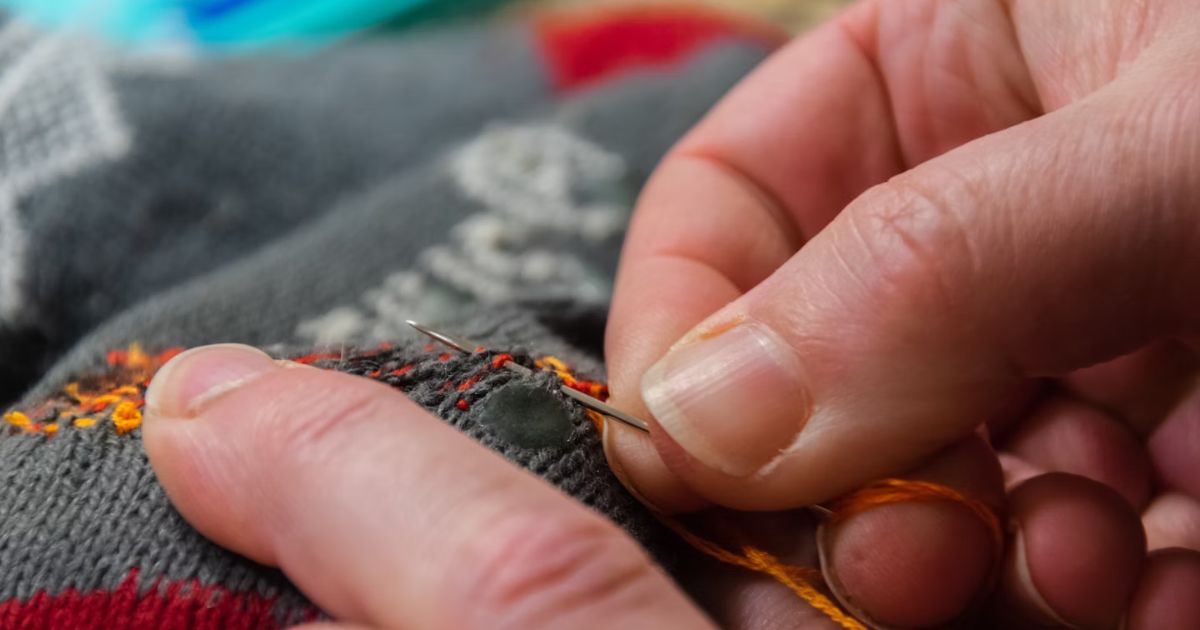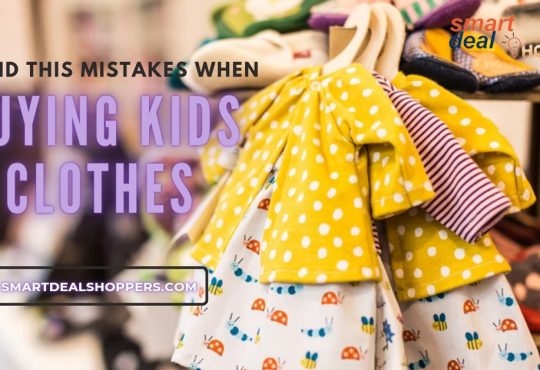
As any parent knows, kids’ clothing doesn’t stay pristine for long. Between dirt, food spills, grass stains, and unexpected rips, keeping your little one’s wardrobe in top condition can be a constant challenge. But don’t worry—there are quick and easy hacks to help you tackle stains and rips effectively, saving you time and money while keeping your child stylish.
This guide explores some of the most common fashion mishaps kids face and offers practical, straightforward ways to repair kids clothing. From quick DIY repairs for torn hems to simple stain-removal methods, this collection of essential tricks ensures a child’s wardrobe stays in top shape for every adventure.
3 Simple Ways to Repair Kids Clothing and Reduce Expenses
1. The Best Stain Removal Techniques for Kids’ Clothes
When it comes to kids’ fashion, stains are inevitable. Whether it’s a chocolate stain from snack time or a muddy splash after an outdoor playdate, it’s essential to act quickly and efficiently. Here are some top stain removal methods:
Pre-treating the Stain
It is essential to pre-treat stained garments before washing them in the washing machine. This helps lift the stain before it sets into the fabric, making it easier to remove during the wash cycle.
- Greasy messes: Thanks to little hands and favourite finger foods, they are all too familiar. But here’s a game-changing hack: dish soap. This kitchen staple is your secret weapon for fighting oil stains. Dab a small amount directly onto the greasy spot, gently massage it into the fabric, and let it rest for 10 to 15 minutes. After that, toss it in the wash like you normally would, and voilà—no more slick stains.
- Baking Soda for Tough Stains: For stubborn stains like sweat, tomato sauce, or even crayon marks, a paste made from baking soda and water can work wonders. Apply it directly to the stain, let it sit for 30 minutes, then gently scrub and lift the dirt with a toothbrush. Rinse and wash as usual.
- Vinegar as a Stain and Odour Fighter: Beyond its role as a cleaning staple, vinegar shines as a natural remedy for stubborn stains and unpleasant odours. Mix equal amounts of white vinegar and water, then let the soiled fabric soak for roughly 30 minutes. It’s particularly great for reviving musty garments or eliminating the lingering scent of sweaty sports gear.
- Hydrogen Peroxide for Blood and Wine Stains: Kids seem to attract all sorts of accidents, including cuts, bruises, and spills. Hydrogen peroxide can be used to treat blood stains—apply directly to the stain and let it bubble. For wine or juice stains, mix hydrogen peroxide with dish soap for added power.
Special Considerations for Different Fabrics
The type of fabric will determine which stain removal method is best. Here are a few fabric-specific tips:
- Cotton: Renowned for its toughness, cotton can usually handle more intense stain-removal treatments. Remedies like baking soda, white vinegar, and dish soap are particularly effective on cotton and won’t compromise the fabric’s integrity.
- Denim: Avoid using bleach on denim, as it can weaken the fibres. Instead, use a mixture of baking soda and water, or pre-treat the stain with a stain remover specifically designed for denim fabrics.
- Delicate Fabrics (E.g., Silk, Wool): These fabrics require extra care. For stains on delicate materials, try using a commercial stain remover that’s safe for delicate fabrics or a mixture of mild soap and cold water.
2. Repairing Rips and Tears in Kids’ Clothing
It’s not just stains that can ruin your child’s clothes—rips and tears are another frequent problem. Fortunately, there are quick and easy fixes to extend the life of your little one’s favourite outfits.
Sewing with a Needle and Thread
If you know how to sew, this is the most straightforward option for fixing rips and tears. You don’t have to be an expert seamstress—basic sewing skills are enough to make clothes wearable again.
- Basic Stitching: For a more discreet fix, use thread that matches the fabric colour. Start by pinning the torn edges together, then use a simple running stitch to sew them back together. For extra durability, use a zigzag stitch along the edge.
- Invisible Stitching: To achieve a polished, professional finish, opt for invisible stitching that seamlessly blends into the fabric. This is especially effective for hems, where the stitches will be hidden from view.
- Reinforcing the Tear: If the tear is in a high-stress area (like the seat of pants), strengthen the area with a piece of fabric on the inside. Cut a piece of fabric just larger than the tear, attach it behind the damaged area, and sew over the tear to both strengthen and hide it.
Fabric Glue for Quick Fixes
For those who don’t know how to sew or need a quick fix, fabric glue is your best friend. It is designed to bond fabric without the need for sewing and works wonders for small tears and rips.
- Clever Fabric Glue Application: Apply a thin layer of fabric glue to the edges of the tear, gently press the fabric together, and hold for a few seconds to allow it to bond. Let the fabric dry thoroughly before wearing the garment again. For added strength and a cleaner finish, secure a small fabric patch over the tear with glue around the edges—much like giving the rip a stylish band-aid.
- Using Patches for Added Style: If you have a tear in a non-obtrusive spot, you can cover it with a fun patch. Kids love unique designs, and this can be a great way to intentionally repair looks, especially on denim or jackets.
Iron-on Patches
Iron-on patches are a fun and easy solution to larger tears, especially on kids’ jeans or jackets. They add a little personality to the clothing while repairing it simultaneously.
- Choosing the Right Patch: For the most seamless fix, pick a patch that matches the colour and texture of the fabric. Opt for patches featuring playful designs or quirky logos that are sure to catch your child’s eye.
- How to Apply: Position the patch directly over the tear. Adjust your iron to the recommended heat setting and press down firmly for approximately 30 seconds to secure it in place. Follow the instructions on the patch package to prevent damage to the fabric.
3. Preventing Stains and Rips in the First Place
Prevention is always better than a cure. While it’s impossible to avoid every stain or tear, there are several measures you can take to reduce the chances of your child’s clothes becoming a casualty.
Stain-Resistant Clothing
Investing in stain-resistant clothing can be a lifesaver. Many kids’ brands now offer clothing made from fabrics that repel stains or are treated with water- and dirt-resistant coatings. While these clothes won’t be completely stain-proof, they do help mitigate spills and splashes, making them easier to clean.
Teaching Kids to Care for Their Clothes
Children are often messy by nature, but teaching them to be more mindful of their clothes can reduce the frequency of stains and tears. Here are a few simple habits to instill:
- Wipe Your Hands After Eating: Encourage kids to clean their hands after every meal, snack, or messy activity. This helps keep oils and crumbs from getting onto clothing.
- Use a Bib or Smock During Meals: For younger children, using a bib or smock during meals can protect their clothes from stains, especially when eating messy foods like pasta or ice cream.
- Change Clothes for Messy Activities: If your child is about to get involved in a messy project, such as painting or playing in the mud, it’s a good idea to have them change into older or play clothes.
Clothing for Active Kids
Lively kids are bound to come home with stained or torn clothes after an active day. Still, choosing the right apparel can make a big difference in minimizing damage. Look for durable material props, such as denim, canvas, or cotton blends, that can withstand their non-stop adventures.
Sustainable Fashion Hacks: Upcycling Kids’ Clothes
As the desire for more sustainable living continues to grow, upcycling clothes is an excellent way to give your child’s wardrobe a new life. You don’t have to toss those worn-out clothes—get creative with these upcycling ideas:
Turning Old T-shirts into New Items
Old t-shirts that are too stained or torn to be worn again can be repurposed into fun, functional items:
- T-shirt Tote Bags: Cut the sleeves and neckline off an old t-shirt, then stitch the bottom together to create a simple tote bag. You can even personalize it with fun designs or fabric paint.
- T-shirt Headbands: Repurpose an old T-shirt by cutting it into strips and braiding them together to create a vibrant, DIY headband. This is a great way to use up old clothes while creating something your child will actually wear.
Repurposing Jeans and Sweaters
Think twice before ditching those old jeans or sweaters—they might be perfect for a creative upcycle. With a bit of creativity, they can be transformed into something new:
- Denim Shorts: If your child’s jeans are too small but still in good condition, consider cutting them into shorts for the summer months. Add a fun patch or decorative stitching for a personalized touch.
- Sweater Scarves: Old sweaters with worn-out sleeves can be turned into cozy scarves. Cut off the sleeves, sew up the ends, and voilà—a new scarf for the colder months.
Keep Kids Stylish—Without the Stress
Kids’ clothing will inevitably face stains and rips, but with the right tools, techniques, and a little creativity, you can fix most of the damage without breaking the bank. By using a combination of quick stain-removal hacks, DIY repair methods, and proactive prevention, you’ll ensure your child’s wardrobe remains both functional and fashionable.
And remember, kids’ fashion doesn’t always have to be about perfection—it’s about enjoying life, playing freely, and expressing their unique personality through clothing. With these hacks, you can help keep their clothes looking great while minimising the stress of constant messes and repairs.




